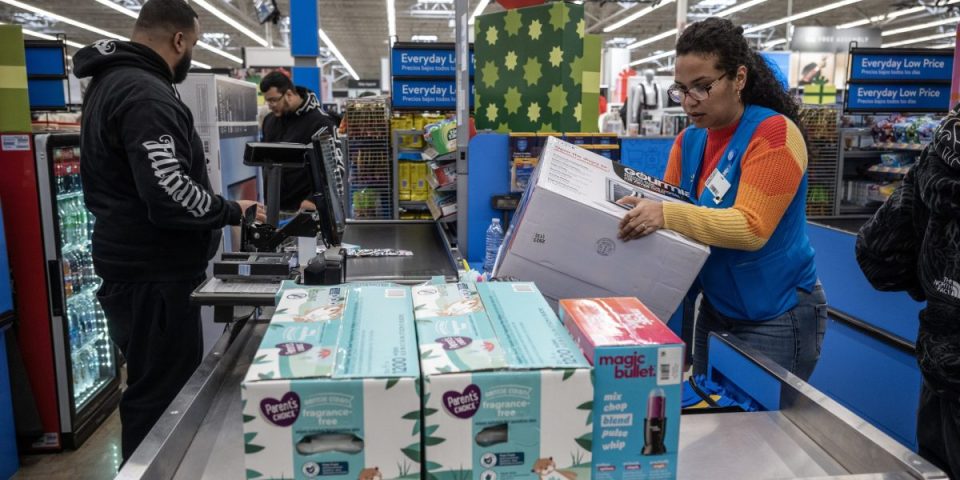Walk into your local Walmart (NYSE: WMT) and you might notice something that less than a year ago would have seemed unlikely: the price tags on everyday baby gear, home goods and certain kitchenware are now sporting noticeably bigger numbers. The shift is subtle in many categories, but unmistakable when you keep an eye on a specific brand of car seat or a set of frying pans and see the cost creep upward over just a few weeks.
This isn’t your imagination working overtime or some seasonal fluctuation. Instead, it’s a reflection of the ripple effects created by the most recent wave of tariffs imposed under the Trump administration, especially on imported goods from China. Walmart, the nation’s largest retailer, gave fair warning back in May that shoppers could expect these increases as the company started feeling the pinch from steeper import duties.
A closer look at the data tells an uneven story. CNBC tracked the prices of about fifty items on Walmart’s shelves, ranging from clothing to electronics, toys, and groceries over the course of several weeks. About a dozen of those products, heavy on imported baby gear and home goods, saw their prices tick higher. For example, a popular 12-piece set of nonstick pans from Beautiful, a kitchenware label co-founded by Drew Barrymore and sold exclusively at Walmart, jumped from $99 to $149. The price of a single 12-inch frying pan from this brand moved from just under $25 to slightly more than $31 over the same period. Meanwhile, jeans and children’s products made in tariff-targeted countries also became more expensive. In the baby section, a Graco convertible car seat, which the packaging notes was made in China, leaped from $199.99 (already marked down from the original $249) up to $299.
These changes are a real-time example of what happens when costs rise for businesses and those businesses pass on some of those increases to their customers. While Walmart is known for squeezing suppliers and keeping costs incredibly low, even it cannot absorb every penny of a sweeping thirty percent tariff on certain categories of imports, especially when those are items families buy for their babies or their homes.
The big question on everyone’s mind is whether these increases are appearing across the board or if they are limited to specific sections of the store. The answer, for now, seems mixed. While items like baby wipes, car seats, frying pans, and select kitchen tools have seen notable jumps, most products that CNBC tracked kept their prices consistent. But the categories that did see movement were far from random. They align closely with goods that are either primarily imported from China or from other countries affected by the latest tariff rounds. And this points back to a broader pattern happening at cash registers across the country.
Nationwide, inflation has been a hot topic, and the latest data visible in government Consumer Price Index reports shows that June brought an annual inflation rate of 2.7 percent, up from 2.4 percent in May. That 0.3 percent monthly bump doesn’t sound dramatic, but for families buying new clothes, home furnishings, or back-to-school supplies, it is starting to add up. Analysts say that tariffs began showing up “materially in key categories” for the first time last month, especially for goods that are heavily reliant on imports. The impacts are most immediately obvious in places like Walmart, with its massive selection of these goods.
Walmart’s own executives have spoken frankly about the company’s balancing act. John David Rainey, the retailer’s chief financial officer, acknowledged that Walmart cannot simply swallow the extra costs forever, regardless of how much its business model depends on offering low prices. In earnings calls, he explained that while the company does its best to keep prices under control, the rising costs tied to tariffs will end up affecting shoppers sooner or later. For certain products, that moment has already arrived, as parents discover when shopping for baby essentials, or when shoppers eye a new set of pots and pans for their kitchen.
Beyond Walmart’s four walls, these changes carry broader implications. Higher effective tariffs mean that American consumers, not just the world’s largest retailers, end up footing the bill through higher prices or, in some cases, through shrinking package sizes as companies search for different ways to soften the blow. Many economists believe that if tariffs remain at these elevated levels, the inflationary pressure will continue piling up throughout the rest of the year and into the next.
In the coming weeks, shoppers could notice more price increases on more categories. For now, though, the rise in cost for items like baby gear and home goods at Walmart is a sign that the complex machinery of global trade can, and does, filter down to the person strolling through the aisles, scanning the shelves for the best deal, and sometimes finding that yesterday’s price is no longer today’s bargain.

